Genesis Gym’s Singapore personal trainers are constantly looking for ways to improve our knowledge and skill so we can serve our clients better.
By Jen Li Sheng (Coach Jen), Centre Manager at Genesis Gym HQ (Eunos).
Earlier in October, I had the great opportunity and privilege of attending the SWIS (Society of Weight Training Injury Specialists) symposium in Toronto, Canada. It is a gathering of the legends in the fitness industry, sharing the latest, most cutting-edge information and techniques at this 3-day conference.
Needless to say, this fan boy here, maximized every opportunity to be bask in the presence of these fitness titans. the fitness industry, sharing the latest, most cutting-edge information and techniques at this 3-day conference.
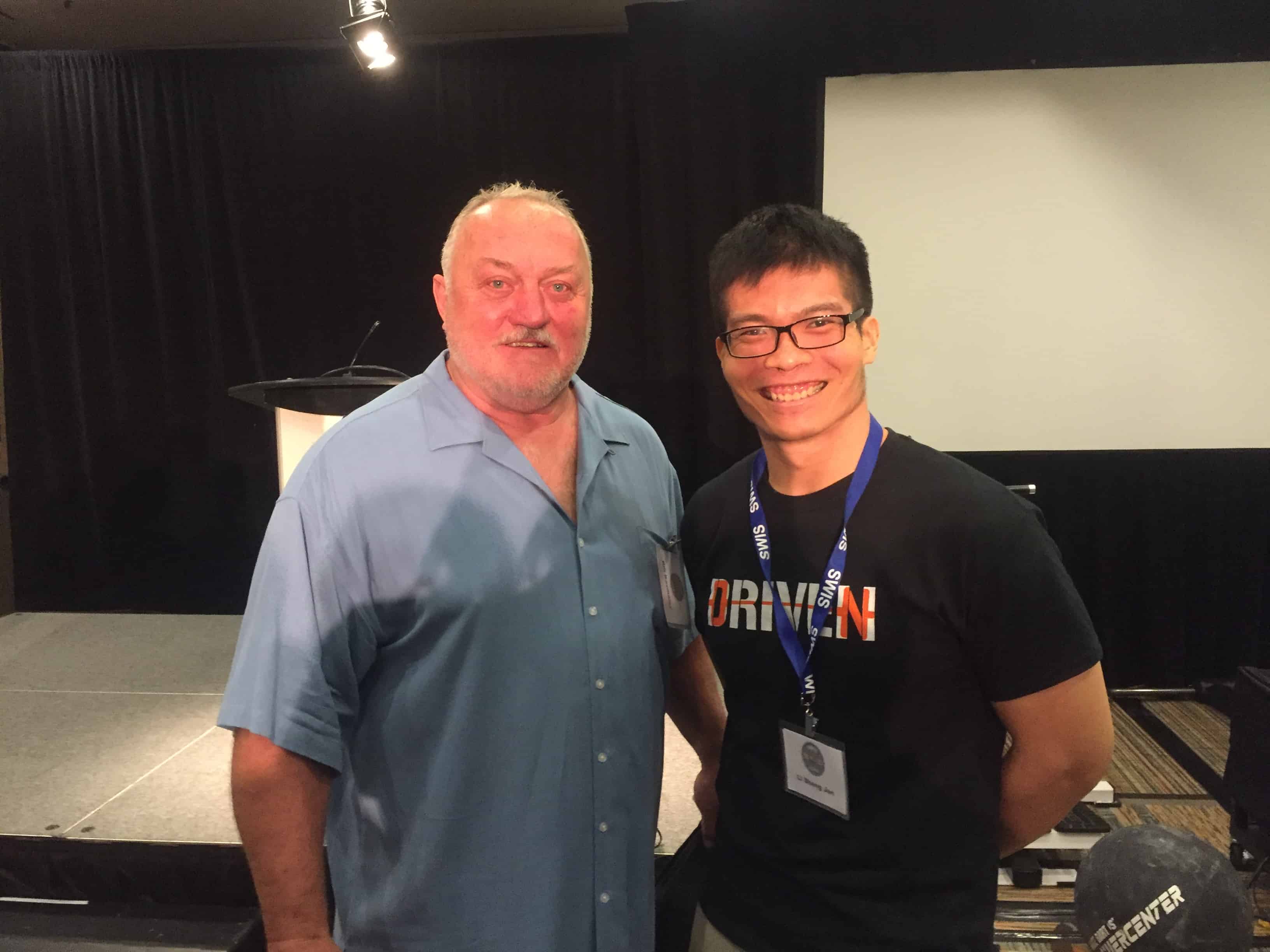
Bill Kazmaier, 3-time World's Strongest Man
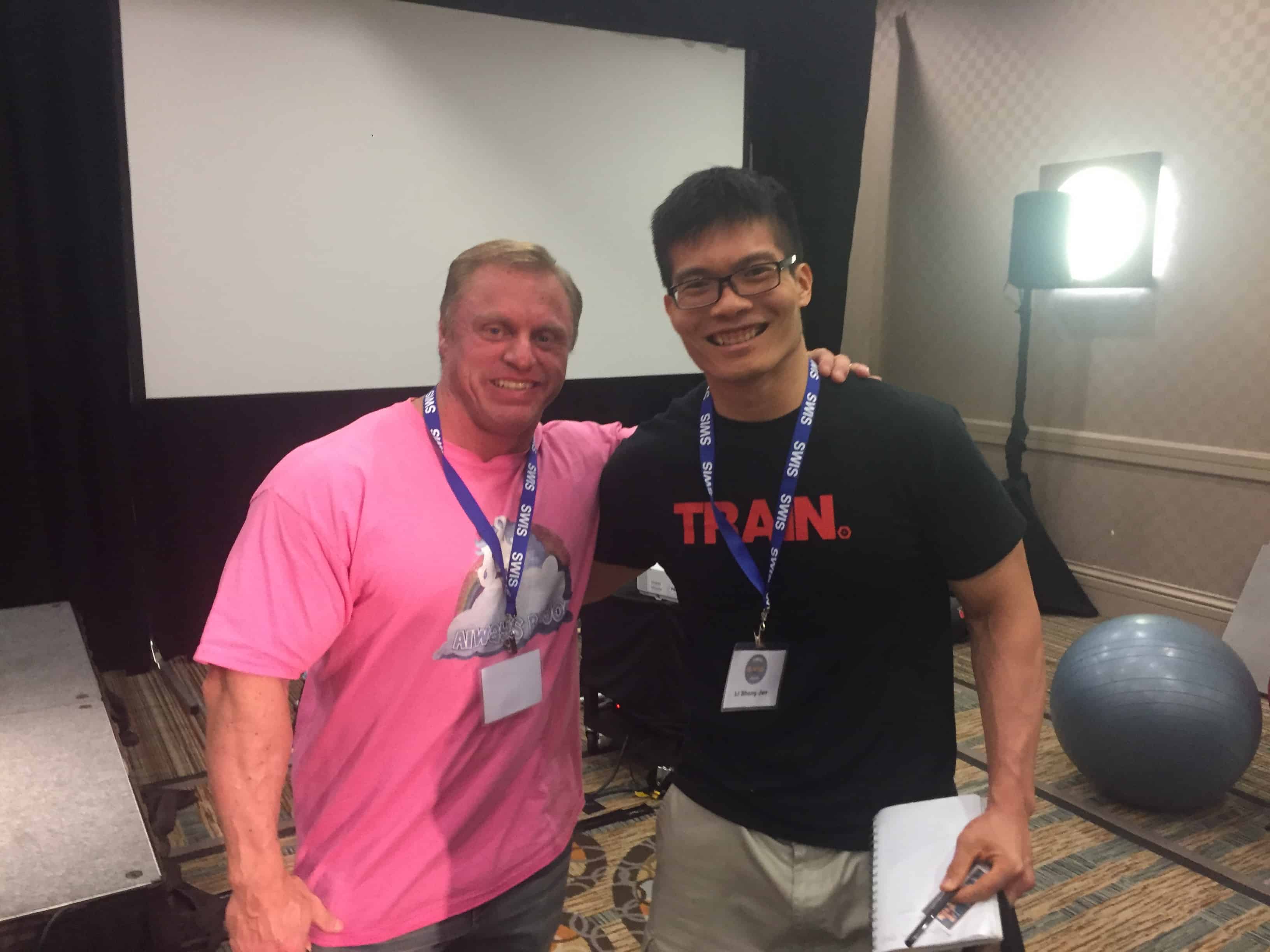
John Meadows, IFBB Pro & Mountain Dog Training fame
I wanted to learn from some of the best in the industry - Top Powerlifters, Bodybuilders, Doctors, Therapists, Trainers, Strength Coaches, and Nutritionists – to pass on the knowledge to our clients at Genesis Gym Singapore.
Drawing from my own unique learning experience at the event, here are 5 points distilled for you to help you achieve your fitness goals.
Key Learning #1: Individual Flexibility as Suspension: Tune it Well.
Picture your body as an F1 racing car.
The suspensions in the vehicle would be tuned to the finest degree to allow optimal maneuvering without compromising maximum speed. Just like the springs in the F1 car, our muscles, tendons and ligaments need the correct tension and tone in them in order to perform at the highest level. Too much flexibility would result in an inability to generate strength and power to its fullest potential. Insufficient flexibility would result in the athlete getting injured easily, as well as hampering performance.
This concept is explained by Dr. Stuart McGill, renowned Back Expert who has worked with countless world champions and professional athletes. Dr. McGill gave examples of how top athletes came to him for help, after seeing their performance decrease. The trainers of these athletes had, with good intentions, made them do copious amounts stretching and flexibility work, in the hopes of increasing their performance. However, more flexibility is not always better for the athlete.
Most of our clients in our gyms have not reached that end of the spectrum, where too much flexibility is bad for them. Chances are, most people could do with more stretching or foam rolling to help them get a little more limber, ease tension in the body, and feel better in general.
However, there are areas on our bodies where we do not want excessive flexibility, but more rigidity. An example that Dr McGill gave was with the lumbar region (lower back). Unwarranted rolling and stretching of the area, while perhaps providing temporal relief, does not address the root cause of back aches and tightness, and can in fact destabilize the region after muscles are relaxed. This is not something you want before you get ready to do a set of deadlifts.
This aspect of flexibility and stability becomes even more important, if you have athletic goals. Such seemingly minute details will determine whether the athlete can express peak power and strength.
That is why it is important to make sure that whatever physical programme you undergo, it is customized according to your body’s current condition and your goals, whether it is to get your body in shape, or if you are an athlete seeking to dominate your game.
Key Learning #2: Take a SMART Approach to Setting Fitness Goals
Matt Nichol, coach for professional athletes and teams in the National Hockey League since the 1990s, explains his winning formula in setting goals for his athletes – S.M.A.R.T.
S – Specific
M – Measurable
A – Attainable
R – Relevant
T – Time-based
Over the years, Coach Nichol has used various methods to assess his athletes, even incorporating technology like microsensors and GPS systems to track movement and speed of his athletes on the field, on top of a coach’s keen eye. Heart rate variability and nervous system output is also monitored, on top of blood work and . Coach Nichol also preaches the importance of listening to his athletes and clients, constantly getting feedback to have the best solution to suit the situation.
There is much parallel in Coach Nichol’s method in how you can apply to your own training regime.
Firstly, come up with your own Key Performance Indicators (KPI). For example, if your goal is to get leaner, keep track to see if your clothes fit better over time. If you want to put on muscle, take before, after, and progress pictures, so that you can see your physique changing. Other indicators could include your weight, waistline, progression in the gym, or performance on the field.
Secondly, take an objective look at your overall approach. With your goals in mind, are you setting yourself up for success with your lifestyle? Is sleep optimal? Are you eating correctly to support your goals? Is stress hampering recovery? And if any of the factors are less than ideal, what can you do about it?
Keeping these in mind, Genesis Gym personal trainers have years of experience in helping their clients go through these questions and KPI-setting. If you need any assistance, feel free to contact us and we’ll be happy to help.
Key Learning #3: Don’t underestimate the importance of your dental health
Coach Jonathan Wong, our founder and Managing Director of Genesis Gym, has briefly talked about this before in the context of the body posture. Equally important (and surprising to some), is that our jaws do affect our fitness performance.
Dr Anil Makkar explained at SWIS, that the vertical dimension of our jaw affects how much air we take in through our breathing. We can lose this vertical height in our jaw over time from loss of teeth (decay or accidents), as well as wear and tear from daily use or constant grinding. As such, the mandible goes further up and back into our skull. This causes a forward-head posture, which narrows air pathways, hence limiting oxygen uptake for the body, and hampering athletic abilities. Conversely, preserving the vertical dimension of the jaw ensures the body’s capability for optimal breathing.
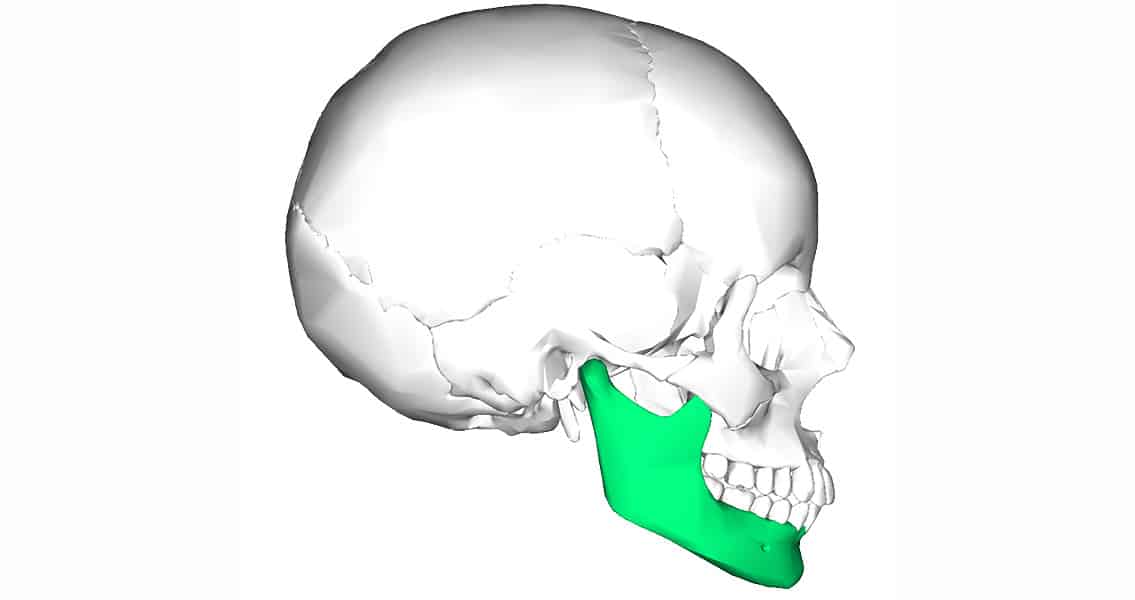
Mandible in the human skull (New Historian)

How well do you do think you can breathe when your windpipe slowly gets restricted by a forward head posture? (www.arid.ws)
An uneven bite of the jaw affects overall posture as well. Starting with the tilting of the neck, it sends a cascade of signals downstream, with regard to how the body aligns itself. A misaligned body is an unstable body, unable to express its fullest potential in terms of flexibility and strength.
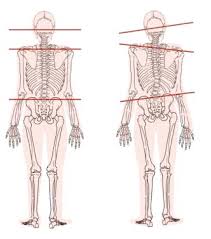
(TMJ & Sleep Disorders Solution)
What this means for you is this - the more forward your head posture, the more tension it creates on your neck, shoulders and chest muscles. These muscles are activated when the body perceives that there is less oxygen available. The added burden of supporting the head on top of compensating for oxygen intake is one of the main causes for neck pains, stiff shoulders, and tension headaches.
This has greater implications on the rest of the body that most people think. With an uneven bite, joints and muscles are in a constant state of compensation. Not only is this added physiological stress as a whole, it can cause higher propensity for injury and pain. Keep getting unexplained joint pain on one side of your body? You might want to take a closer look at your jaw
So, what we have been told growing up, about taking care of our dental health is truly important! Peak athletic performance aside, our teeth do matter for lifelong wellness of your body, on top of chewing and speaking well. Keep them clean, and visit your dentist regularly to make sure it is free from decay.
Teeth grinding usually increases with physical activity and during sleep. And if you do experience grinding of teeth, especially evenly, Genesis Posture Therapy is the most advanced orthopedic solution that could help you solve the problem. Sign up for our Genesis Posture Therapy Seminar on 10 December to find out more (click on the above link to sign up)!
Key Learning #4: Get on track with your nutrition!
Dr. Darren Willoughby, Director of the Exercise and Biomechanical Nutrition Laboratory at Baylor University, pointed out that proper nutrition for an athlete should always focus the these 3 areas:
- Supplying adequate fuel for training
- Support recovery
- Use nutritional interventions, such as nutrient timing, to promote training induced adaptations.
As a professional bodybuilder himself as well as coach to physique competitors, Dr. Willoughby explained the importance of getting the energy balance correct, matching the individual’s food intake with the energy expenditure. Once that is sorted out, other details that should be looked at would be overall protein consumption throughout the day, as well food consumption around training sessions.
This concept is very important for you, especially if you are training towards a fitness goal. Always ensure that you are eating the correct amount to match your goals. Have some form of diet tracking in place. It can be a food journal, taking photos of your meals, or using the numerous apps (such as MyFitnessPal) available to make the process easier. At Genesis Gym, we have also created a Nutrition Guide with helpful tips for our clients.
Once you have a tracking system in place, make sure you consume sufficient protein in a day. 1g per pound, or 2.2g per kg of body weight would be a good place to start.
Spread the consumption more or less evenly throughout the day, as this helps with growing or maintaining lean mass. A good rule of thumb would be to have a serving of protein for every meal. Lastly, make sure to consume carbohydrates pre and post training session. They fuel your workouts prior, and promote recovery after.
Key Learning #5: The Value of Single Minded Determination
What is all the technical knowledge in the world, without some inspiration to accompany it?
Dorian Yates, 6-time Mr Olympia, and Bill Kazmaier, 3-time World Strongest Man were amongst the presenters at the symposium. They ran through technical pointers on training and coaching some of the attendees on their lifts. I even got the opportunity to let Kazmaier take a look at my squat, learning a thing or two.
However, beyond their training expertise, it was their discipline, spirit of determination, and work ethic that truly blew me away.
Yates talked about his competitive days in the 90s, where he dominated his sport. Everything in his life revolved around bodybuilding and the training. He chose to reside in his hometown of Birmingham, England, instead of Venice, California, which was the body-building capital of the world then, in order to avoid the distractions of a glitzy lifestyle and media attention.
It was there where he crafted his world dominating physique, earning the nickname of “The Shadow”, because he would remain under the radar the whole year, and emerge unexpectedly at competitions to take the first place. Prioritizing his rest and recovery, he would avoid any social events that might end late, so he could sleep early at night.
Nutrition is always on the forefront of his mind. He got to a point where if he ever ate out, his mind would automatically start doing mental arithmetic, calculating how much calories, protein, carbohydrates and fat was on the plate of food, so that he is always on track.
Bill Kazmaier’s approach was just as focused and dogged. He would seek every possible advantage to help him get stronger and perform better. Already realising that the jaw is in involved in helping him produce greater strength, he sought the help of a dentist to fit him with a special mouth guard moulded to his teeth.
Kazmaier’s shoes were specially tailor-made so that they provided the best support possible when he performed his events. When it comes to training, ask him how one could deadlift more. His answer would be straightforward and simple: Deadlift more.
These legends achieved success by keeping things simple, and working with a tunnel vision towards your goals, however big or small.
Even if we are not aiming to be Number 1 in the world, there are still lessons to glean from their personal experiences.
We all have our responsibilities in our busy lives, but we can prioritise the important ones, and make time for them. Our own personal health and fitness should amongst the top of our list.
After all, if you are not healthy, you cannot perform your obligations well, and take care of those around you. Make your own fitness a necessary goal, and be willing to take the required steps. It could mean sleeping earlier, or ensuring that you are stocked with fruits, vegetables and whole foods that are readily available for consumption, or putting aside time to go to the gym regularly. Consistently performing these activities will ensure improvements in your health, and these results will be more far-reaching than you could possibly imagine.
Conclusion
I am grateful and thankful for the people I met, the information I learned, and the whole experience for this edition of SWIS. It will be another 2 years before the next one come about. Till then, I look forward to applying the the knowledge acquired with our personal training clients at Genesis Gym.
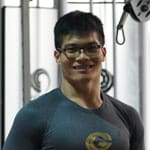
Coach Jen is the centre manager of our flagship branch at Paya Lebar. This ‘gentle giant’ is extremely willing to answer questions from anyone in the gym. He has been responsible for the results of many of our Paya Lebar centre clients. He is a very experienced athlete and the only person in history to win the Singapore Strongest Man competition 4 times.
I hope this article helps you think about training in a more holistic way. If you want a deeper understanding of how to implement a training program for yourself, then we welcome you to join one of our personal training programs by clicking the button below.
The Genesis Gym personal trainers will design the ideal fitness, nutrition and flexibility plan for you. And guide you to your fitness goals.
